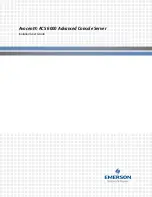
6
Introduction
The transmission of coded timing signals began to take on widespread importance
in the early 1950´s. Especially the US missile and space programs were the forces
behind the development of these time codes, which were used for the correlation of
data. The definition of time code formats was completely arbitrary and left to the
individual ideas of each design engineer. Hundreds of different time codes were
formed, some of which were standardized by the „Inter Range Instrumantation
Group“ (IRIG) in the early 60´s.
Except these „IRIG Time Codes“ other formats, like NASA36, XR3 or 2137, are
still in use. The board TCR167PCI however only decodes IRIG-A, IRIG-B or AFNOR
NFS 87-500 formats. The AFNOR code is a variant of the IRIG-B format. Within this
code the complete date is transmitted instead of the ‘Control Functions’ of the IRIG-
telegram.
Description of IRIG-Codes
The specification of individual IRIG time code formats is defined in IRIG Standard
200-98. They are described by an alphabetical character followed by a three-digit
number sequence. The following identification is taken from the IRIG Standard 200-
98 (only the codes relevant to TCR167PCI are listed):
character
bit rate designation
A
1000 pps
B
100 pps
1st digit
form designation
0
DC Level Shift
width coded
1
sine wave carrier
amplitude modulated
2nd digit
carrier resolution
0
no carrier (DC Level Shift)
1
100 Hz, 10 msec resolution
2
1 kHz, 1 msec resolution
3
10 kHz, 100
μ
sec resolution
3rd digit
coded expressions
0
BCD, CF, SBS
1
BCD, CF
2
BCD
3
BCD, SBS
BCD:
time of year, BCD-coded
CF:
Control-Functions (user defined)
SBS:
seconds of day since midnight (binary)
Содержание TCR167PCI
Страница 1: ...TCR167PCI Technical Information Operating Instructions ...
Страница 7: ...7 IRIG Standard format ...
Страница 8: ...8 AFNOR Standard format ...
Страница 11: ...11 Block diagram TCR167PCI ...
Страница 34: ......







































